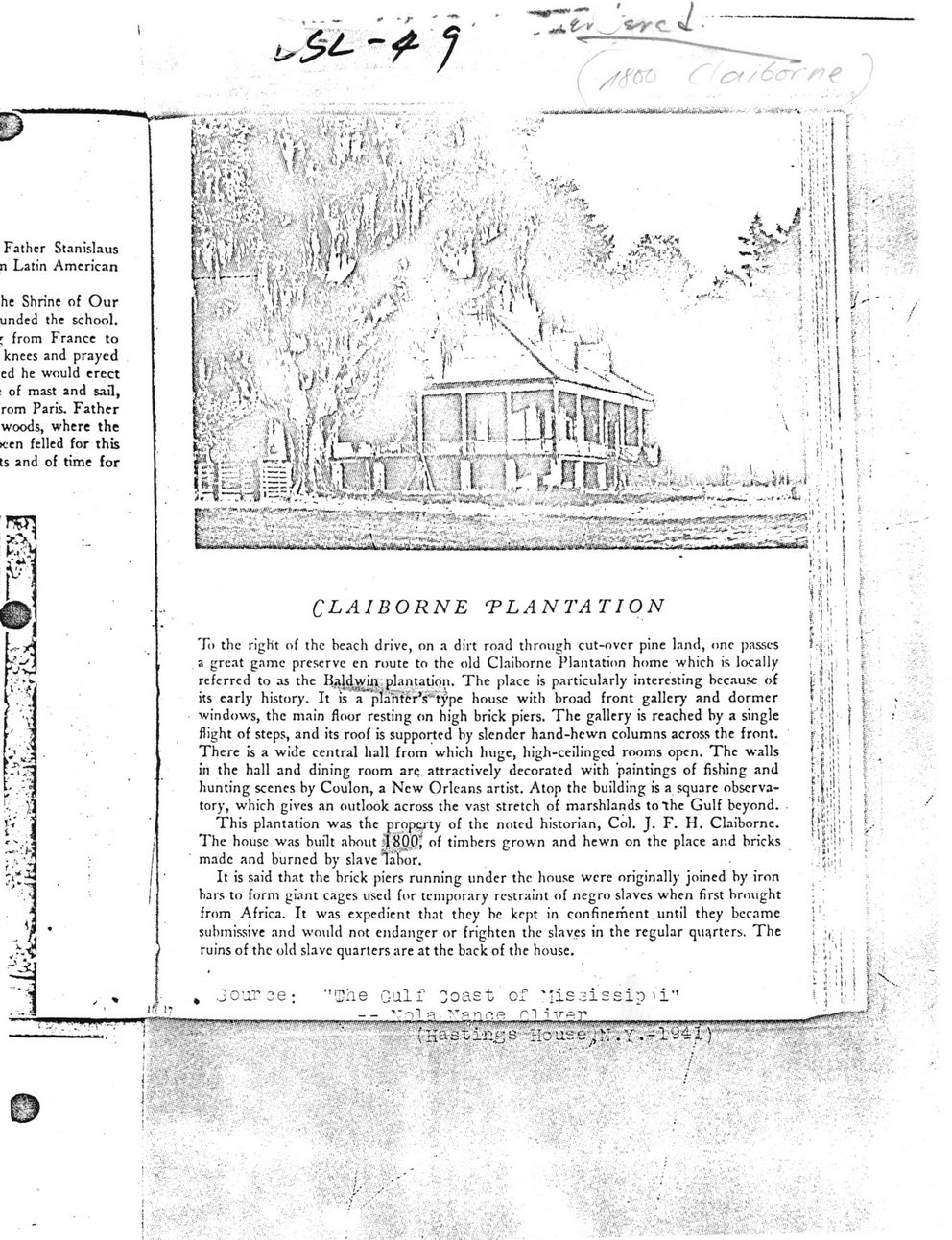This text was obtained via automated optical character recognition.
It has not been edited and may therefore contain several errors.
E?
Father Stanislaus n Latin American
he Shrine of Our unded the school. ; from France to knees and prayed ed he would erect : of mast and sail, rom Paris. Father woods, where the »ccn felled for this ts and of time for
i
-- ' - r '
■ S&-* J
d.
'*m 1 4 a •■'••uw.,-, .-.it \,. {.;;• *'«• liu t* .« - ,>v, . ■■ x.i
I. "
1$ v 't4» • •? ^ ••'•'' •"
%:P| kP
WteiSmSWr* v
Strrr;•» -:•• •* ;4-cv^ ••
.■i VI
i 4'T!;
4^4 <i! i
¥ ■ A I
. *•>
$£0ik -; - r '/ii'
R'^v-PiA'f' ' iVisf 'T («r 'V * *<*•
b.f'f,* '!L -<f n?,^vVV
lit j H,i r -.i,1'
I:!:!. ’ ihi \ I -fii I
fc..
|4-#
ft!
i.'' •i;
IV
i- 5
v
¥
i ■ i i ?.
CLAIBORNE T LAN I1 A TI ON
To the right of the beach drive, on a dirt road through cut-over pine land, one passes a great game preserve en route to the old Claiborne Plantation home which is locally referred to as the Baldjviix plantation. The place is particularly interesting because of its early history. It is a plahter’sHype house with broad front gallery and dormer windows, the main floor resting on high brick piers. The gallery is reached by a single flight of steps, and its roof is supported by slender hand-hewn columns across the front. There is a wide central hall from which huge, high-ceilinged rooms open. The walls in the hall and dining room art; attractively decorated with "paintings of fishing and hunting scenes by Coulon, a New Orleans artist. Atop the building is a square observatory, which gives an outlook across the vast stretch of marshlands to "the Gulf beyond.
This plantation was the proptyty of the noted historian, Col. J. F. H. Claiborne. The house was built about 80,0j of timbers grown and hewn on the place and bricks made and burned by slave’lalior.
It is said that the brick piers running under the house were originally joined by iron bars to form giant cages used for temporary restraint of negro slaves when first brought from Africa. It was expedient that they be kept in confinement until they became submissive and would not endanger or frighten the slaves in the regular quarters. The ruins of the old slave quarters are at the back of the house.
’"The Gulf Coast of 'Tisoissip ^i"
!=ii, i ;
ft? ’ I •i . ! 4
■*;! L j
H‘i
? ij'.S
<4 :
I- * !
f. j i
f Mi n->i:
U?[ i!
Hi'li
• ? a • J •
-■ Si!!'
JSsj-vl-,
/
f

Claiborne Property 002